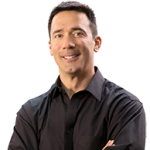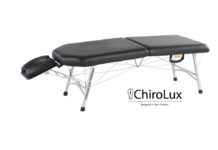
Ask a chiropractor what wellness care is and chances are great that you’ll get a host of different answers. The old-school terminology was maintenance care, with maintenance care being some sort of pre-scheduled adjustment often at a frequency of one time per month…. Very old school. My first chiropractic mentor told me once a month was a ‘cop out’. I’ll never forget that conversation! Real wellness-based care can and should be much more comprehensive.
Although there is a wide range of statistics quoted, it’s generally accepted that the patient visit average (amount of visits a new patient will visit your office) is about 12 visits per new patient. At 12 visits, did the patient’s chief complaint even get addressed? Let’s call a spade a spade. A PVA of 12 is merely pain relief care, nothing more, nothing less. Chiropractic is able to offer so much more than just pain relief. As the Olympic runner, Steve Prefontaine, stated “to give anything less than your best is to sacrifice the gift.” Pain relief care is giving less than your best. So no matter what the typical chiropractor professes to practice and believe, the statistics indicate that by and large chiropractors practice pain relief care and not wellness care.
 Additionally, it’s also evident that the majority of chiropractors today perform an adjustment and then some passive care, traditionally electrical stim, ultrasound and/or roller tables. In essence, in addition to the adjustment, only passive care is performed. Passive care is very limited in efficacy and it is highly over utilized in many offices. This is a trend that needs to be reverse. It’s also evident that the majority of chiropractors do not adequately address soft tissue issues that are typically concomitant with subluxation correction. Muscle imbalances are high on this list, which are typically ignored. Careful examination of old photos of the Palmer clinic clearly show active care for soft tissue issues were certainly addressed. In today’s terminology this is called ‘active care’, and active care has a much higher efficacy than passive care. However, active care is not wellness care.
Additionally, it’s also evident that the majority of chiropractors today perform an adjustment and then some passive care, traditionally electrical stim, ultrasound and/or roller tables. In essence, in addition to the adjustment, only passive care is performed. Passive care is very limited in efficacy and it is highly over utilized in many offices. This is a trend that needs to be reverse. It’s also evident that the majority of chiropractors do not adequately address soft tissue issues that are typically concomitant with subluxation correction. Muscle imbalances are high on this list, which are typically ignored. Careful examination of old photos of the Palmer clinic clearly show active care for soft tissue issues were certainly addressed. In today’s terminology this is called ‘active care’, and active care has a much higher efficacy than passive care. However, active care is not wellness care.
It’s important to understand exactly what is driving wellness care today. In a nutshell, it’s the baby boomers that are driving it. Starting about 15 years ago and culminating right now is the largest shift in wealth transfer that has ever occurred in America. The World War II generation is finishing transferring their wealth to the baby boomers. The baby boomers now have larger discretionary resources and they do not want to feel older. They are spending to stay active. So in the past, it seemed that the only doctors out there that were even remotely trying to practice some semblance of wellness were chiropractors. Today, that’s changed drastically. Anti-aging medicine is all the rage thanks to the baby boomers. Truthfully, the timing has never been better to be a chiropractor. Patients are looking everywhere for wellness care. Chiropractors are uniquely positioned and qualified to fill this niche.
So what is wellness care if a monthly adjustment isn’t the total answer? Well, it’s a start, but only a start. A great resource to study would be Dr. James Chestnut. Here’s the deal: there are supplement companies knocking on your door all the time. Most of this stuff you truthfully don’t need. According to Dr. Chesnut, there are four essential supplements for you to consider with your patients to assist with their wellness care. The supplements are: a certified organic and whole food multivitamin/mineral, a certified organic and non-chemically concentrated fish oil, a certified organic vitamin D and a certified organic and highly comprehensive probiotic.
This is the starting place for real wellness care when combined with a superb chiropractic adjustment on a frequency that is optimal for the patient. Some patients are once a week, some are every two weeks, some every three weeks, some are every four, etc. again, this is a springboard for wellness care, not an end-all.
 The question I’d like you to ask yourself is “do I take supplements?” If you take supplements, doesn’t it make sense that your patients could benefit from them too? Accordingly, do you get adjusted or lease check periodically? Okay, you get the point.
The question I’d like you to ask yourself is “do I take supplements?” If you take supplements, doesn’t it make sense that your patients could benefit from them too? Accordingly, do you get adjusted or lease check periodically? Okay, you get the point.
If you’re still reading this, you are at least interested in providing wellness care to your patients. The time is now. I contend that a healthy practice should be made up of approximately 50% wellness patients and 50% active care patients. Where do you stand on this front? If you’re not quite there, how do you get there?
If you’ve read the book The Secret, you already know the answer. It’s a three-step process: ask, know, and feel. To initiate this in your practice, it’s going to take some patient education and communication. Set the stage from the very first visit. That’s when you initially start talking about wellness care. This continues on from visit one and essentially never ends. Repetition is the mother of all learning, so if you expect your patients to understand how wellness can impact their health then you must continually educate them so that the message sets in as intended. This isn’t the place to spout dogma. There really isn’t any need. There is a plethora of science to back up that which we do to bolster wellness. Dig into a little research. Query the web. Read Dr.’s Chestnut’s and Murphy’s material. It’s all out there.
Who better than a chiropractor to provide real wellness care? We’ve got the phenomenal benefits of periodic chiropractic care. We’ve got essential supplementation to give our patients the basic building blocks that their body requires. And prudent supplementation can symptomatically have dramatic impact on the health of your patients. And even much more importantly, prudent supplementation can have a HUGE impact on the long-term wellness of your patients which is infinitely more important than symptom elimination. Please, initiate wellness care into your office immediately. Your patients deserve it.
 Dr. Chris Tomshack is the founder and CEO of HealthSource Chiropractic and Progressive Rehab.
Dr. Chris Tomshack is the founder and CEO of HealthSource Chiropractic and Progressive Rehab.






